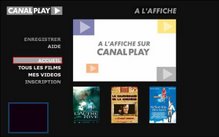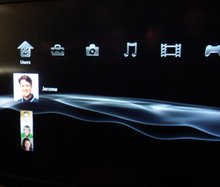Active-TV ecosystem developers,
Much of the converge market dreamers have focused on premium video content distribution via IPTV. What might be called a type or pear-pressure may have driven participation in a frenzy of legal, content protection and revenue sharing issues. This may have contributed to the downfall of the UK BT entertainment chief after his statement: “It’s not about the content”; He was replaced with a former Universal Studios executive with plans for a BT [UK telco] television service.
Over at the BBC they are no less ambitious, but certainly more restrained about the imminent dominance of IPTV – BBC director: “I’m not a swivel-eyed looney that sees the end of conventional television overnight”.
IMS Research estimates that by the end of 2005, there were over 9 million integrated DVRs shipped worldwide. Growth in the DVR market is expected to come primarily from operator deployments [MSOs]. By the end of 2010, a forecast 136 million TV households worldwide will employ an integrated DVR box.
The ability of DVR to erode TV advertising revenue is not part of the familiar convergence frenzy. Advertising erosion is in a denial stage, as there is no agreement on an alternative; and denial is seen as better than panic. Interesting, the erosion of linear-TV advertising is likely to be most significant in the US market where the uptake of IPTV is likely slowest.
As more considered views of convergence appear, Google wants to hire a “Product Manager for Interactive TV”. They will “identify key market trends that are shaping user behavior when watching Television”. Google go on to say: “intersection of internet and Television technologies, video-on-demand, DVR and emergence of next generation set-top-boxes with IP connectivity”.
Of interest is Google’s mention of the STB with IP connectivity – also know as the hybrid-STB. It is clear that hybrid-STB adoption is a significant trend. With Google’s increased attention to the hybrid-STB, maybe Intel will direct more effort to a ViiV hybrid-STB rather than ViiV DMA. AMD and active-TV partners appear ahead of both in terms of an Extended-PC and hybrid-STB ecosystem development.
The 10-foot role of the Extended-PC is to run media application software – then project the UI over the home network to the TV. With the inclusion of advanced video CODEC support in the STB SOC, the hybrid-STB can directly support IP-TV viewing. A PC in the living room is not the only way to view IP-TV. The Extended-PC may have more of a role in supporting new forms of TV advertising. Active-TV developments have been pushing relevant developments. They already have projects, plans and collaborators for the support of new forms of advertising supported by an active-TV ecosystem
Google hopes to identify “search and advertising technology”, for which they can no doubt be a key supplier. Search engine usage is a widely accepted 2-foot PC task. This has enabled Google to develop a 2-foot advertising business. It is not clear that TV watchers want a 10-foot search engine; after all, the TV is an entertainment device, not an information device. Search engine usage may not give Google the ‘TV exposure’ and hence an advertising role. Maybe the advertising support role falls more naturally to the IPTV aggregator; Or to those able to synchronise media applications to IPTV or broadcast TV service.
Comments, corrections and feedback welcome
Navigate YouTube available at iTunes App Sore
An easy to use iPhone and iPod touch App that enables both new and advanced YouTube users to get the best from YouTube.
Browse video Standard Feeds, Categories, Channels and Playlists. Then organize new videos into your own favorites and playlists. Make playlists private or public. Subscribe to other user's playlists and video collections for future viewing. Subscribe to videos matching search-words.
Look at publicly viewable favorite videos, playlists and subscriptions based on your YouTube friends, family and contacts. Send and receive video links with YouTube contacts via YouTube video messages.
Search for new videos tagged for your language or geographical region, using local keyboard. Explore for new videos via easy switching of user ID to the owner of interesting videos - then explore their world.
All actions are kept in sync with PC, Mac or Apple-TV access to YouTube. Available at Apple App Store.
Browse video Standard Feeds, Categories, Channels and Playlists. Then organize new videos into your own favorites and playlists. Make playlists private or public. Subscribe to other user's playlists and video collections for future viewing. Subscribe to videos matching search-words.
Search for new videos tagged for your language or geographical region, using local keyboard. Explore for new videos via easy switching of user ID to the owner of interesting videos - then explore their world.
All actions are kept in sync with PC, Mac or Apple-TV access to YouTube. Available at Apple App Store.
active-TV technology for PC

Windows PC based home network
Friday, May 12, 2006
Tuesday, May 9, 2006
Advertising revenue moving to non-linear TV
Active-TV ecosystem developers,
Grocery brand advertising budgets are not the size of an auto maker, but the announcement below indicates that smaller-scale advertisers are also moving away from traditional linear-TV advertising methods.
Increasingly, brand promoters are stating non-linear advertising better supports a lifestyle-messaging approach. A mini-DAL (Dedicated Advertiser Location) allows the viewer to depart from normal broadcast viewing and enter a dedicated advertising content area. Platforms such as BSkyB’s Sky-Active interactive TV support this.
“Viewers 'jump' to the DAL or Mini-DAL from a broadcast commercial through an interactive button or from a banner in an interactive service.”
These kinds of UI operation are easily supported by an active-TV hybrid-STB. The DAL takes the form of an IP-TV channel; the “jump” is taken from an overlay media application presenting a banner (or the like) over the broadcast image.
If you want to see DAL advertising in action, take a look at http://www.idigitalsales.co.uk/html_content/images/mpegs/bmwseries1.mpg The video is a capture of a TV screen; first shown is the linear BMW advertisement, then the video shows the jump-banner and the DAL channel -- Bit of a ‘change’ for many US TV viewers.
The active-TV hybrid-STB and extended-Notebook are well placed to support these new forms of advertising.
Feedback, corrections and comments welcome.
more at http://blog.itvt.com/my_weblog/2006/05/uks_bernard_mat.html
Grocery brand advertising budgets are not the size of an auto maker, but the announcement below indicates that smaller-scale advertisers are also moving away from traditional linear-TV advertising methods.
Increasingly, brand promoters are stating non-linear advertising better supports a lifestyle-messaging approach. A mini-DAL (Dedicated Advertiser Location) allows the viewer to depart from normal broadcast viewing and enter a dedicated advertising content area. Platforms such as BSkyB’s Sky-Active interactive TV support this.
“Viewers 'jump' to the DAL or Mini-DAL from a broadcast commercial through an interactive button or from a banner in an interactive service.”
These kinds of UI operation are easily supported by an active-TV hybrid-STB. The DAL takes the form of an IP-TV channel; the “jump” is taken from an overlay media application presenting a banner (or the like) over the broadcast image.
If you want to see DAL advertising in action, take a look at http://www.idigitalsales.co.uk/html_content/images/mpegs/bmwseries1.mpg The video is a capture of a TV screen; first shown is the linear BMW advertisement, then the video shows the jump-banner and the DAL channel -- Bit of a ‘change’ for many US TV viewers.
The active-TV hybrid-STB and extended-Notebook are well placed to support these new forms of advertising.
Feedback, corrections and comments welcome.
more at http://blog.itvt.com/my_weblog/2006/05/uks_bernard_mat.html
Subscribe to:
Comments (Atom)







